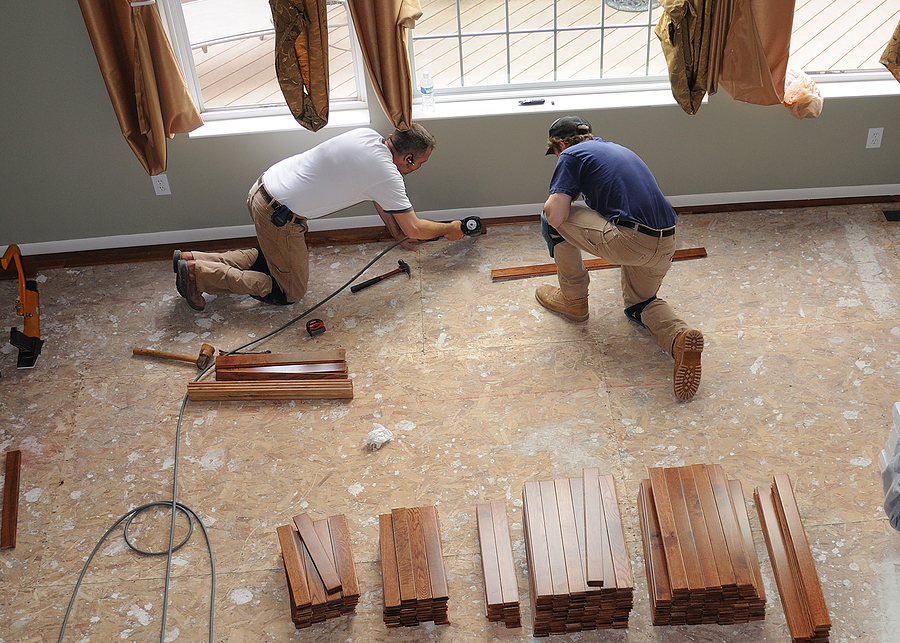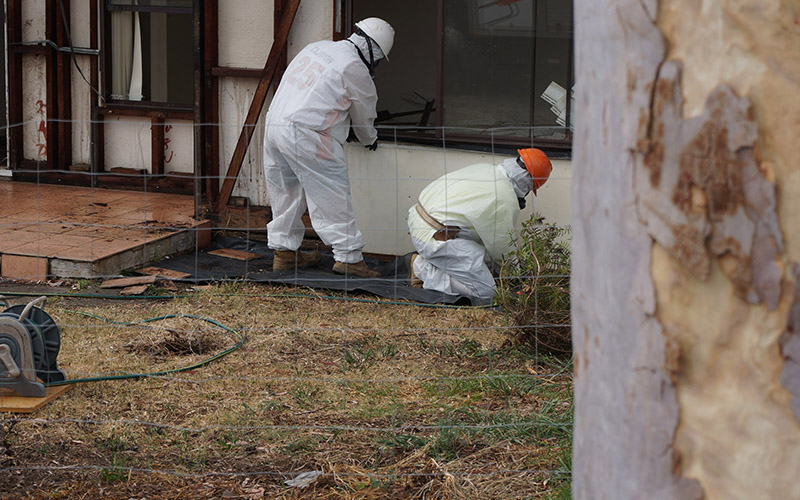During its time as a ‘miracle mineral’ asbestos saw wide use in Australia, particularly in the construction industry. Coveted for its durability and resistance to heat, asbestos fibres were used in everything from fibre cement sheeting (often referred to as fibro) to insulation and even as a paint additive.
Corrugated asbestos cement sheeting and asbestos cement sheeting: two examples of non-friable asbestos.
Although a total asbestos ban was implemented in Australia in 2003, there is still a high volume of asbestos in the existing housing supply, specifically in houses built or renovated before 1991. Today as a result asbestos removal and disposal is big business.
Under Australian law, in order to remove quantities of asbestos larger than than 10 Square metres you need to have an asbestos removal licence.
There are two types of licences that you can acquire to perform asbestos removal: a Class A licence for both friable and non-friable asbestos and a class B licence for non-friable asbestos only.
In this blog we will take a look at the more common variety of these two types of asbestos: non-friable.
Non-friable asbestos refers to Asbestos Containing Materials (known as ACMs) in which the asbestos particles are tightly bonded. This is usually done with a bonding agent like concrete or plaster.
The presence of this bonding agent means, that unlike friable asbestos, the asbestos fibres are unlikely to break or crumble.
Compared to friable ACMs, which can consist of 100% asbestos fibres, non-friable ACMs contain a relatively low amount of asbestos, usually no more than 15%.
Once you strip a fibro home of its asbestos sheeting, there is not much left.
For these reasons non-friable asbestos is the safer of the two types and usually poses little threat to human safety if intact and undamaged. However, it does pose significant risk if it is broken or cut in anyway as it breaks this bond, potentially releasing dangerous asbestos fibres into the air.
Non-friable asbestos must be removed carefully by hand to ensure the ACM is undamaged and unbroken in the removal process. The ACM is then wrapped in plastic and gently placed in a skip for disposal.
Some common non-friable asbestos products include Fibro, Super Six corrugated cement sheeting, flue pipes, cement roof shingles, sprayed insulation and boiler insulation.
Home renovators should proceed with caution when dealing with asbestos.
Bar far the biggest risk posed by non-friable ACMs is to renovators, who often cut or grind these products without realising they contain asbestos. If you live in an older home and are thinking of renovating it is important to have the property inspected to see if any asbestos is present before commencing renovations.






